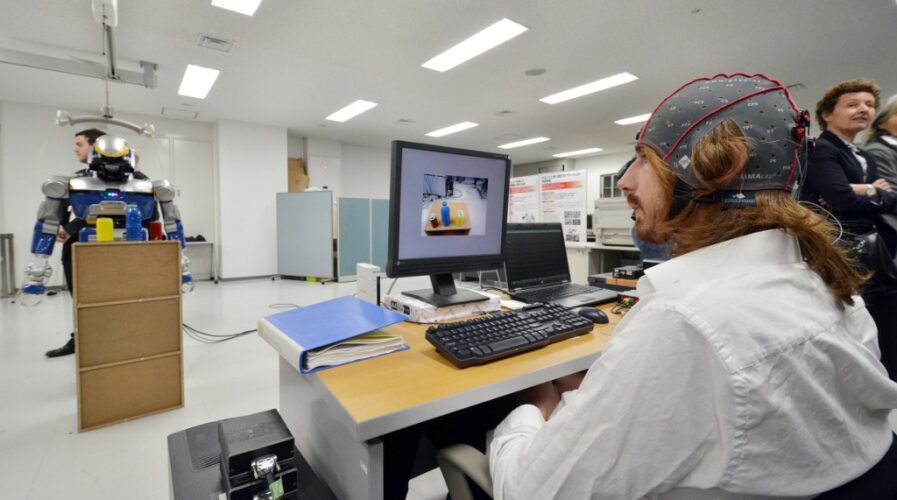
Humanoid robot HRP-2 controlled by human brain activity with the brain machine interface (BMI), one of the tech trends for 2020 to watch for. Source: AFP
Hype or not? Gartner eyes three future cutting-edge tech trends
- Social distancing, ‘health passports’ and other new-age tech suited for a distributed workforce emerged in 2020
- But what are some of the other tech trends for 2020 that will drive innovation and competitive advantage over the next decade?
So-called social distancing technologies were identified as one of the top new tech trends for 2020, among other emerging trends that will drive innovation over the next ten years, according to analyst firm Gartner’s Hype Cycle for Emerging Technologies 2020 report.
As with nearly all aspects of life this year, many of the emerging tech trends for 2020 revolved around adapting to the ‘New Normal’, whether that’s facilitating better, more productive remote working or staying safe within the office. While things like health passports and social distancing technologies are making an impact in the shorter term, it’s Gartner’s longer term trends that are truly exciting, whether just ‘hype’ or carrying some real substance.
Here are just three of the more notable trends from Gartner’s Hype Cycle.
Digital Me
Social distancing tech and ‘health passports’ like India’s Aarogya Setu app, are just some of the ways that humans can represent themselves in the digital sphere nowadays. Not only can a digital representation of their appearance be generated nowadays, but more and more interaction-based activations using gesture, the voice, or the eye are making their way in, beyond just verifying IDs but enabling a variety of functionality.
Some savvy retailers are already allowing users to create their own avatars on which to virtually try on clothes, but the report pointed out other data points that can be used to recreate a truly digital version of oneself, like biometric measurements of heart rate and glucose levels, but that the potential of the overall trend will be much bigger than that.
And it looks like integrations directly with the brain are not too far off, with 2-Way BMI (brain machine interface) allowing information and responses channeled directly from the brain to the machine, and vice versa.
The wide world of AI
Artificial intelligence (AI) is having a big 2020, being featured prominently in Gartner’s Hype Cycle in all its many forms including AI-augmented development, responsible AI, explainable AI, embedded AI, composite AI. AI algorithms will have a tremendous swath of applications in the coming years, influencing the enterprise 360-degrees.
Organizations looking to explore the boundaries of the Intelligent Enterprise should consider AI-assisted design, AI-augmented development, ontologies and graphs, small data, adaptive ML, self-supervised learning, generative AI, and generative adversarial networks.
Biological tech
For over forty years, the physical limitations of silicon-based circuit constructs have existed within the IT field, and have been bound by Moore’s Law. Moore’s Law states that the number of transistors in a dense integrated circuit doubles nearly every two years, meaning there is a physical upper limit to the amount of innovation that can be packed unto circuit boards.
In the next few years, the discovery or creation of new advanced materials of a more organic nature, are creating breakthrough opportunities to make technologies faster and smaller, and bypassing the limitations of silicon-based materials.
Some of the technologies emerging with a decidedly ‘natural’ slant will include DNA computing, biodegradable sensors, and carbon-based transistors.
READ MORE
- Ethical AI: The renewed importance of safeguarding data and customer privacy in Generative AI applications
- How Japan balances AI-driven opportunities with cybersecurity needs
- Deploying SASE: Benchmarking your approach
- Insurance everywhere all at once: the digital transformation of the APAC insurance industry
- Google parent Alphabet eyes HubSpot: A potential acquisition shaping the future of CRM


